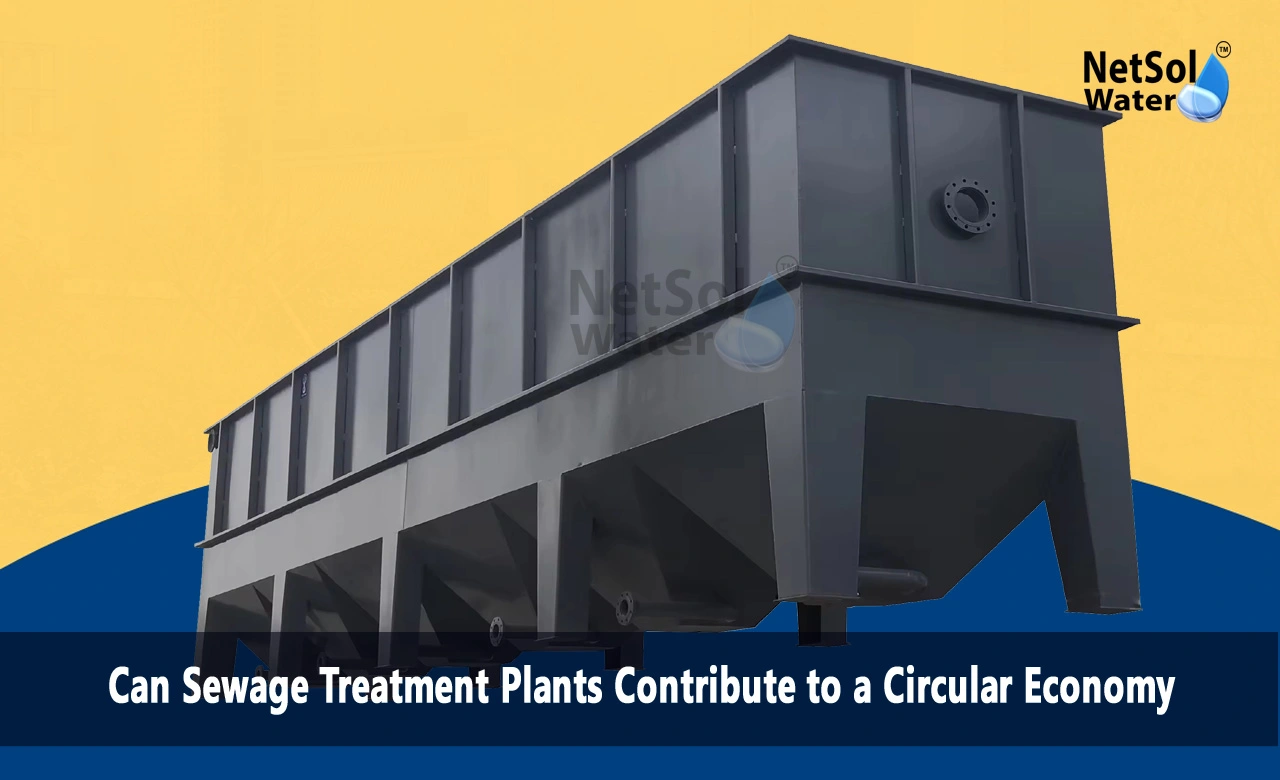Can Sewage Treatment Plants Contribute to a Circular Economy?
With increasing focus on environmental sustainability and resource conservation globally, the concept of a circular economy has gained significant traction. Unlike the traditional linear model of make-use-dispose, a circular economy emphasises keeping materials and products in use for as long as possible through effective recovery, reuse, refurbishing and recycling. This prevents wastage and reduces the environmental impacts of the extraction and processing of virgin raw materials.
Circular economy strategies are often associated with industrial manufacturing, but there is a huge untapped potential in the water and wastewater treatment sector as well. Rather than being just a disposal point, sewage treatment plants can be redesigned as resource recovery facilities to extract value from waste streams. This aligns perfectly with the principles of circular economy.
How STPs Can Drive Circularity?
1. Water Recycling and Reuse
With advanced treatment technologies like membrane bioreactors, sewage effluent can be purified to high quality for non-potable reuse applications like industrial processes, irrigation, construction activities, etc. This recycling reduces the demand for freshwater resources.
2. Energy Generation from Sludge
Sewage contains up to 9 times more energy from organic matter than is required for treatment. Efficient anaerobic digestion produces biogas that can be utilised for generating electricity/heat onsite or upgraded to biomethane as a green fuel.
3. Nutrient Recovery
Phosphorus and nitrogen compounds present in sludge can be captured and converted into organic fertilisers through processes like struvite crystallisation, reducing the need for synthetic agrochemicals.
4. Precious Metal Recovery
Wastewater streams often contain traces of precious metals like gold, silver, and palladium from industrial discharges. Techniques for cost-effective precious metal recovery can be deployed at STPs.
5. Waste-to-Value Products
Sewage sludge biosolids can be specially processed to manufacture value-added products like biochar, bioplastics, adsorbents, etc., with useful commercial applications.
6. Industrial Synergies
By developing eco-industrial clusters/parks around strategically located STPs, treated wastewater and recovered byproducts can directly fuel various manufacturing operations onsite.
Key Enablers for Circular Sewage Treatment
• Process Innovations: Deploying emerging technologies like microbial fuel cells, microalgae cultivation, and hydrothermal liquefaction for efficient resource extraction.
• Systems Approach: Designing STPs through a holistic, integrated lens optimising water/energy/nutrient recovery flows rather than a linear treatment approach.
• Digital Monitoring: Instrumentation and automation with IoT/AI/digital twin capabilities allow real-time process control for optimal recovery.
• Public Awareness: Addressing social stigma around wastewater reuse and nutrient recycling to build acceptance and create market demand for reclaimed products.
• Supportive Policies: Incentives, public-private partnership models and regulatory reforms encouraging greater resource recovery from sewage plants.
• Decentralization: Community-scale decentralised wastewater treatment plants are better aligned with circular economy principles than centralised facilities.
As societies progress towards more sustainable development, rethinking sewage treatment infrastructure through a circular economy lens can unlock tremendous value while driving water security, energy efficiency and food production synergistically. With the right technological innovations, collaborative ecosystems and policy enablers, sewage treatment plants can be powerful catalysts for the circular economy transition.
Conclusion
Instead of being mere waste disposal facilities, sewage treatment plants hold immense potential to drive circularity by recovering water, generating energy from sludge, extracting nutrients, precious metals and value-added products. However, realising this requires process innovations, instrumentation, stakeholder acceptance and supportive policies incentivising municipal utilities to strategically redesign treatment infrastructure and operations as integrated resource recovery systems. Transitioning sewage treatment towards a circular economy model can generate sustainable economic, environmental and societal value by optimally utilising resources while minimising waste and environmental impacts. As the circular economy gathers momentum globally, it is imperative that the water sector plays an enabling role.
To explore customised commercial RO plants, Industrial RO plants, ETP or STP solutions for your needs in your areas and nearby regions, contact Netsol Water at:
Phone: +91-965-060-8473, Email: enquiry@netsolwater.coms



